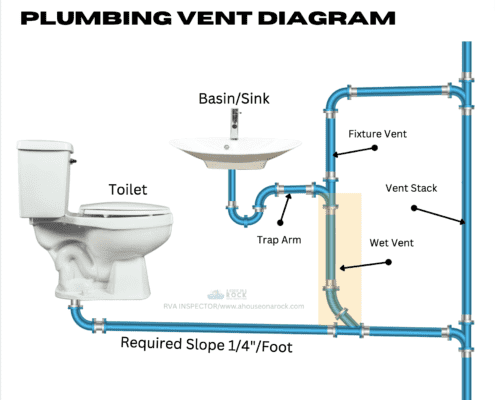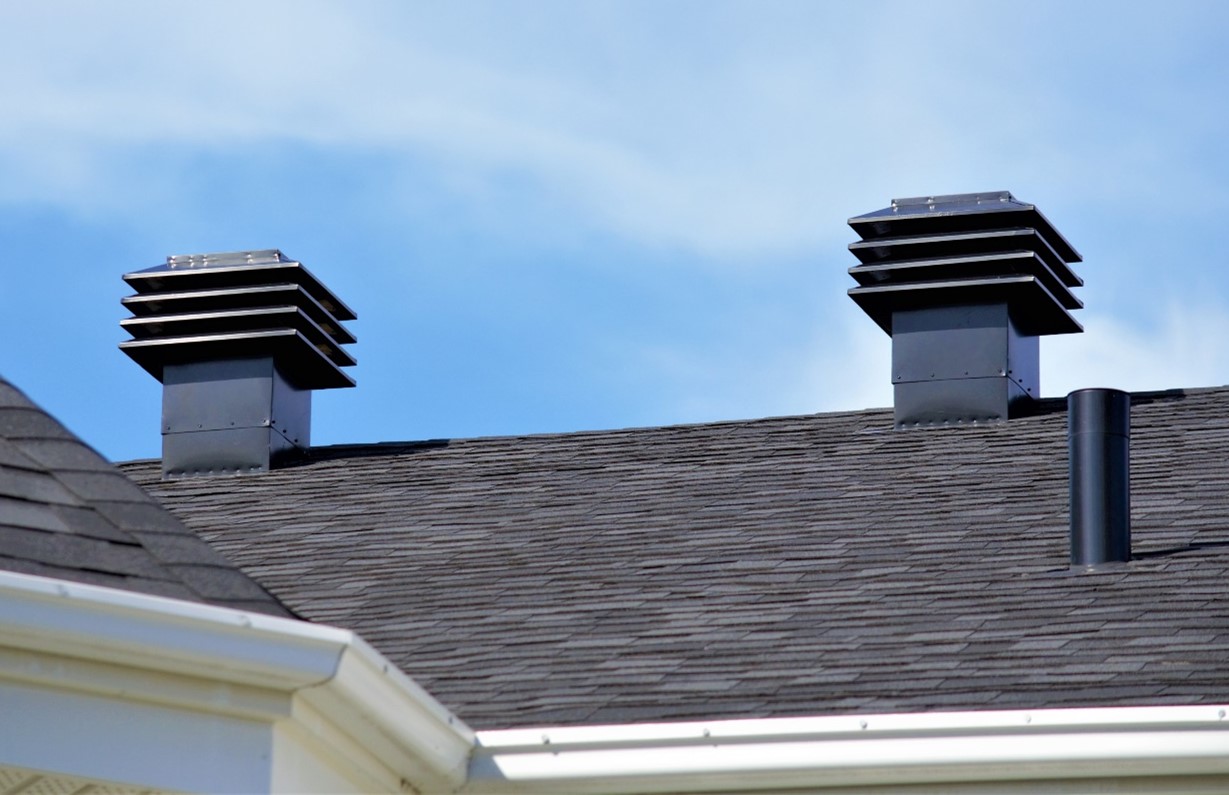The Reason Why Proper Ventilation is Crucial in Plumbing Systems
The Reason Why Proper Ventilation is Crucial in Plumbing Systems
Blog Article
This article below in relation to What Is A Plumbing Vent & How Do They Work? is pretty much intriguing. You should check this stuff out.

Appropriate ventilation in pipes systems is usually ignored, yet it is vital for maintaining the functionality and security of your home's pipes. Air flow assists control atmospheric pressure, avoid the accumulation of hazardous gases, and guarantee the effective elimination of waste. In this overview, we will certainly check out the relevance of proper pipes ventilation, just how it works, and the benefits it gives your plumbing system.
Understanding Air Flow in Pipes
Air flow in plumbing refers to the network of pipes that allow air to stream via the drain system. These vents offer multiple purposes, consisting of managing air pressure within the pipes, preventing sewage system gases from getting in the home, and assisting in the smooth circulation of wastewater.
Just How Air Flow Functions in Plumbing Solutions
Air Pressure Regulation
Correct air flow maintains balanced air pressure within the plumbing system. When water streams with pipes, it displaces air. Without ample ventilation, this displacement can develop adverse pressure, leading to slow down drains or siphoning of water from catches, which can cause undesirable odors to leak right into the home.
Avoiding Sewer Gas Build-up
Among one of the most important functions of plumbing vents is to stop drain gases, such as methane and hydrogen sulfide, from gathering within the home. These gases can present significant health threats and are extremely flammable. Vent pipes permit these gases to run away securely outdoors.
Helping in Waste Elimination
Air flow aids in the reliable removal of wastewater by stopping airlocks in the drain system. When air can flow easily through the vents, it permits water and waste to stream efficiently with the pipes, lowering the risk of clogs and backups.
Types of Pipes Vents
Key Heap Vent
The major pile air vent, also known as the vent stack, is the primary air vent in a pipes system. It prolongs from the main drain line up via the roof covering, enabling gases to run away and fresh air to enter the system.
Branch Vent
Branch vents connect to the primary stack vent and offer individual fixtures, such as sinks, commodes, and showers. These vents make certain that each component has sufficient ventilation to work correctly.
Air Admittance Valve (AAV).
An Air Admission Valve (AAV) is a one-way valve that enables air to enter the pipes system without the demand for a typical air vent pipeline prolonging with the roofing system. AAVs are typically used in remodellings or locations where mounting a common air vent is not practical.
Signs of Poor Ventilation in Plumbing.
Slow Draining Fixtures.
If your sinks, tubs, or bathrooms are draining pipes gradually, it could be a sign of bad air flow. Inadequate air circulation can develop a vacuum cleaner impact, making it challenging for water to drain pipes properly.
Gurgling Seems.
Gurgling audios originating from drains are often an outcome of air being drawn with water catches as a result of adverse pressure in the pipelines. This is a clear indicator of not enough ventilation.
Undesirable Smells.
Sewer smells inside your home are a red flag that your plumbing system is not properly aerated. This could mean that drain gases are not being properly vented outside, causing possibly harmful conditions.
Usual Ventilation Mistakes.
Insufficient Vent Sizing.
Using small air vent pipelines can result in poor air flow and pressure inequalities in the system. It's necessary to use vents that meet the specific needs of your pipes system.
Improper Vent Positioning.
Positioning vents too far from the components they offer can decrease their effectiveness. Correct positioning guarantees that air can move easily and effectively via the system.
Disregarding Code Demands.
Building ordinance supply specific guidelines for plumbing air flow. Overlooking these codes can result in a system that fails to operate correctly and might result in costly repair work or health hazards.
Advantages of Appropriate Air Flow.
Enhanced System Effectiveness.
Appropriately ventilated pipes systems operate much more successfully, with fewer clogs, faster draining pipes, and much less strain on the pipelines. This efficiency expands the lifespan of the pipes system.
Improved Air High Quality.
By avoiding sewer gases from entering your home, appropriate ventilation adds to better indoor air high quality, making your living atmosphere healthier and more comfortable.
Protecting Against Water Damage.
Ample ventilation assists protect against water from being siphoned out of catches, which can bring about sewer gases going into the home and triggering water damages in time.
Actions to Guarantee Proper Air Flow.
Consulting Pipes Codes.
Always consult neighborhood pipes codes when creating or changing your plumbing system. These codes give the essential guidelines for appropriate airing vent and guarantee your system fulfills safety and security standards.
Routine Inspection and Upkeep.
Normal assessments can help identify possible air flow issues prior to they become major issues. Upkeep jobs, such as cleaning up air vent pipes and checking for clogs, are important for maintaining the system in good working order.
Expert Setup.
For brand-new setups or major adjustments, it's important to work with an expert plumber. They have the know-how to make sure the ventilation system is correctly developed and installed according to code.
Verdict.
Correct ventilation is an essential element of any kind of plumbing system, guaranteeing that it works successfully and safely. By comprehending the importance of ventilation, acknowledging the indications of inadequate ventilation, and taking steps to maintain your system, you can stop pricey issues and shield your home's air high quality.
Understanding the Role of Your Plumbing Vents in the Drainage System
The plumbing system in your home is more than just the kitchen sink, toilet, and bathroom. Some problems that arise within home plumbing are hard to detect because homeowners may not understand potential causes.
One part of the plumbing system that could cause you endless problems is the venting. The drain lines that run through your home and drain wastewater need proper venting to function properly. Faulty plumbing vents can lead to several problems that require the expertise of a plumber to check them out. Before finding experienced plumbing services, there are a few things to learn about plumbing vents.
Why vents are vital
Vents in the plumbing system lead to an outside area such as the roof or the back. The function of these vents is to keep sewer gases away from the drain pipes. They also establish seals in the drainage pipes that prevent the sucking back of waste gases into the home. Venting in the plumbing system also allows oxygen to get into the drainage system, which is an essential component in the breakdown of waste matter. The vents also ensure that the air pressure within the drainage system remains balanced, facilitating the flow of wastewater.
Possible problems
When the plumbing vents are problematic, one of the consequences is imbalanced water levels in the toilet. If you notice that the levels in the toilet bowl rise and fall all the time, then there may be something wrong with the vents.
Another issue is air bubble formation within the toilet. In most cases like these, the drain pipes are not receiving enough air. Lack of air pressure equalization is what leads to water flow problems. If you come across such issues in your home, make sure you call professional plumbers, such as the ones from Perfection Plumbing & Drain Cleaning Ltd.
Potential causes
Several scenarios can lead to some of the plumbing problems that homeowners suffer because of venting. One such scenario is the use of incorrectly sized vents. Usually, vents are the same size as the drain line to facilitate proper venting. Vents that are too small will lead to some plumbing issues. Another potential cause is fixtures that are not close enough to the vents. In this scenario, air forces itself through the traps of other fixtures, leading to gurgling sounds from toilets and sinks.
Most of these problems also happen with clogged vents. Tree leaves and debris can cause clogging when they make their way down a vent. Unclogging plumbing vents is a service that you can entrust to Saskatoon plumbers. They will know how to snake down vents and remove clogging stuck in fixtures.

As a serious reader about What Is A Plumbing Vent & How Do They Work?, I figured sharing that piece of content was sensible. Sharing is caring. You won't know, you might be doing someone a favor. Thank-you for going through it.
Get Estimate Report this page